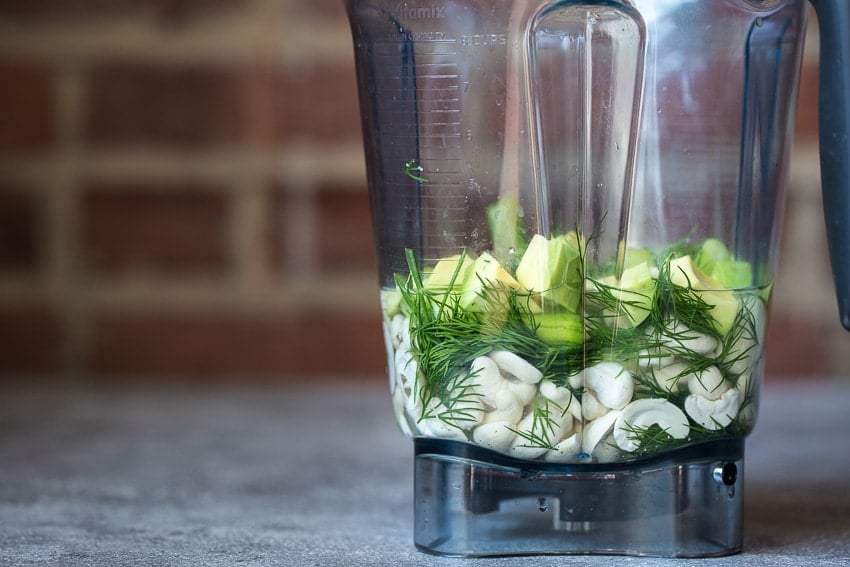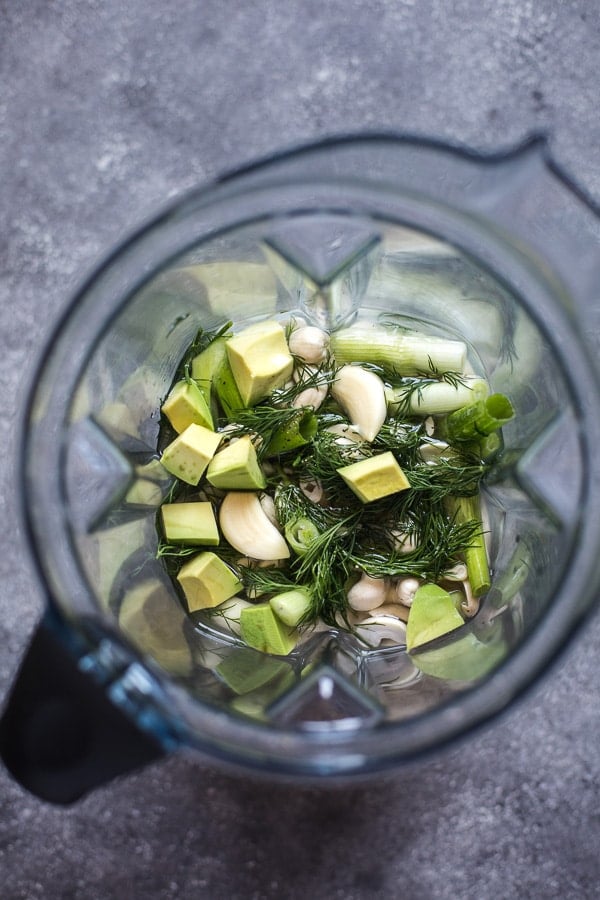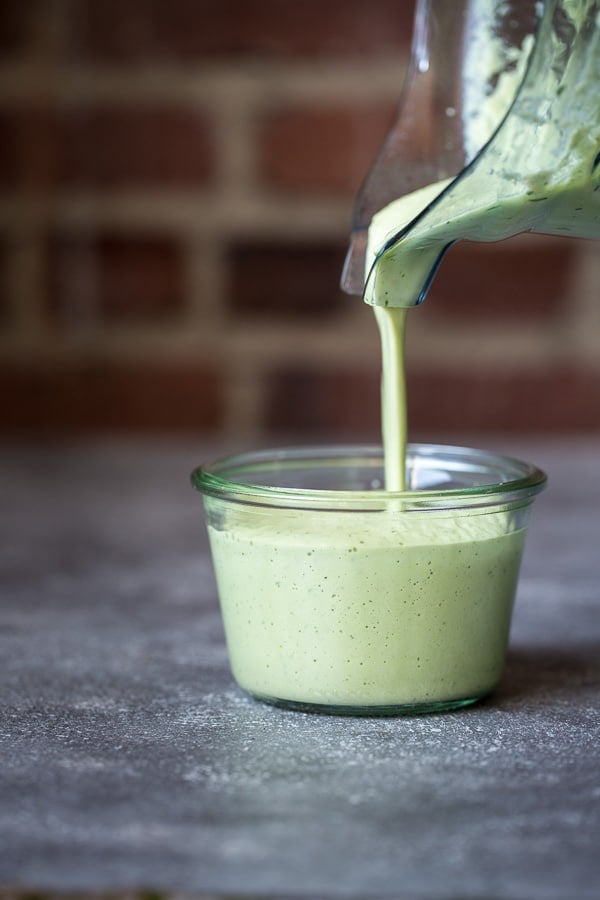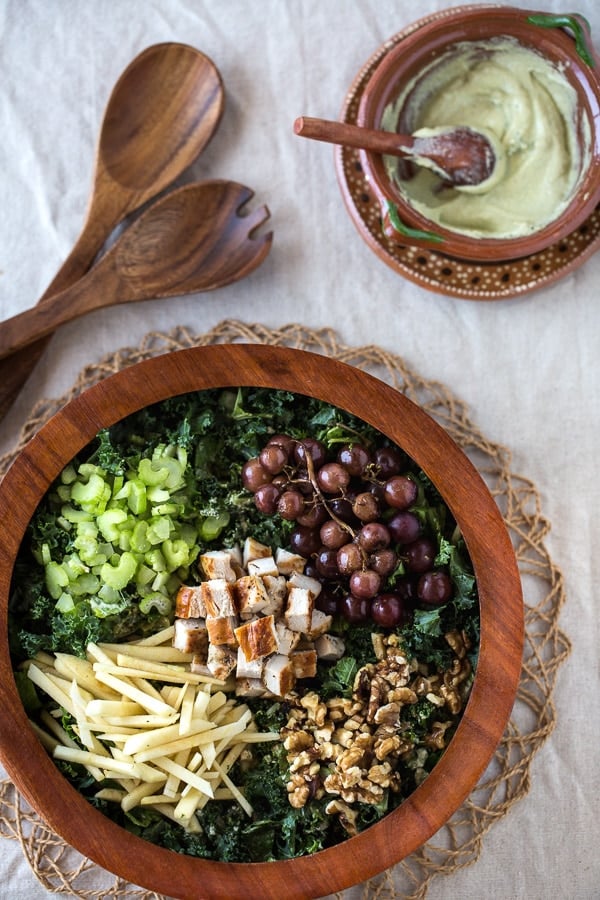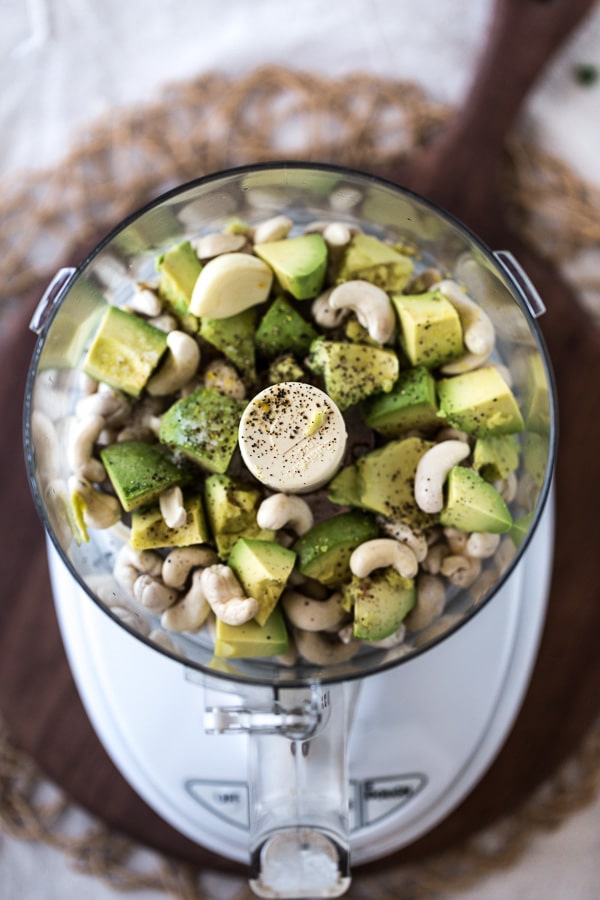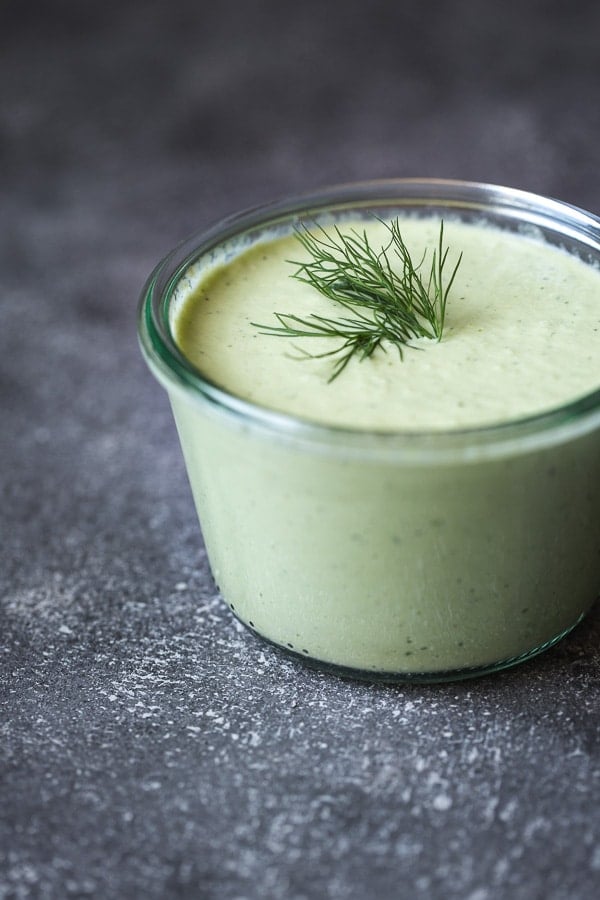In my opinion, there are 2 reasons for their popularity. First, they soften as they soak in water. When they are pureed in a blender (or in a food processor) with a little water, they turn into a creamy sauce. Second, they have a very mild flavor making them a great ingredient to use as a base. I have been making variations of this sauce for over a year now. To tell the truth, it felt weird to write a recipe for it. Because, even though I use the same principle every time, the end product is rarely the same. It really depends on what I want to use it for and what kind of flavors I want to create. Therefore, I suggest that you use the below recipe as a place to start to create your own cashew sauce.
About the Recipe:
The main principle is to use cashews soaked for a couple of hours, as a base. You can soak them overnight as well, but I found that 2-3 hours of soaking is usually enough. You can blend them together with water, or if you want a little bit more creaminess and flavor, with some unsweetened almond milk (or any other nut milk of your choice). In addition, you can add flavor boosters like garlic, avocados, scallions, fresh herbs, spinach, kale, Sriracha, chipotle peppers, celery stalks, nutritional yeast, etc. Literally, sky is the limit. As you blend everything, you have 100% control on its consistency. If you want it to be thick, use less liquid and vice versa. I prefer it to be semi-thick and pourable so I usually start with ¾ cup of liquid for ¾ cup of cashews and adjust it from there. Like I mentioned earlier when it comes to creating variations of this recipe the sky is the limit. For this particular green cashew sauce, I used dill, lemon juice, scallions, and garlic as flavor boosters, because I am planning to use it as a topping for an upcoming slow-baked salmon recipe. However, if I were using it as a sauce to flavor tacos, perhaps I would use cilantro as the fresh herb and lime as the acidic flavoring agent. Or if I were using it in a Middle Eastern recipe, I would use parsley and mint as fresh herbs and even add in a small cucumber.You get the idea. Here, one thing I want to caution you on is the amount of salt being used. I usually start with half a teaspoon and go from there. The amount of salt really depends on whatever else you are adding to flavor it. I usually end in between a teaspoon and a teaspoon and a half of salt, but I recommend giving it a taste as you blend and adjust it accordingly. Before I let you go, here are 3 recipes that I used a variation of this cashew sauce: Kale Waldorf Chicken Salad with Avocado and Cashew ‘Mayo’ In this recipe, I used it as a healthier alternative to mayonnaise that is traditionally used in Waldorf salads. To make it super creamy and flavorful, I used avocado and unsweetened almond milk mixed with garlic and freshly squeezed lemon juice. To get the recipe, please click on the image. Vegan Burrito Bowl For this recipe, I used it as a topping. Since this bowl was a Mexican dish, I flavored it with adobo sauce, avocados, garlic, and almond milk. To get the recipe, please click on the image. Slow-Baked Salmon with Butter Beans In this recipe, I used it as a topping on slow-baked salmon served over butter beans. The flavor boosters in this version are fresh dill, lemon juice, and garlic. I topped each salmon piece with a dollop of this green cashew sauce to give it a refreshing taste and a pop of color.
